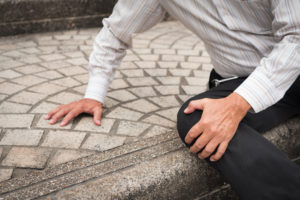
If you were hit as a pedestrian that’s jaywalking, is it your fault? Unfortunately, California leads the nation in pedestrian accident deaths. If you hit a pedestrian jaywalking or you are a pedestrian who was hit while jaywalking, read on to learn more about how personal injury compensation is calculated in California and what to do immediately following an accident.
What Is Jaywalking?
Jaywalking occurs when a pedestrian crosses the street outside a designated crosswalk where a traffic signal device or police officers control an adjacent intersection. When a crosswalk is controlled, that means there are signals in operation, and those signals indicate to pedestrians when they may cross the street.
What Happens If You Hit a Jaywalker in California?
If a pedestrian is hit while jaywalking, who is at fault? Not all pedestrian accidents are entirely the driver’s fault. Before January 1, 2023, jaywalking used to carry a fine of up to $196. Although jaywalking safely usually did not result in a ticket, Vehicle Code 21955 still applied to pedestrians in both residential and non-residential areas. It may have been clearer at that time whether a jaywalker could be deemed at fault for a pedestrian accident, even if they were injured in the accident. A new law in California provides that jaywalking is only illegal if there is an immediate chance of a motor vehicle or bicycle collision.
If a pedestrian is hit by a car, they likely can file a lawsuit against the driver for their injuries. However, even if the pedestrian was legally jaywalking, they might still be partially at fault for the accident. In California, a person whose own negligence contributed to an accident can still recover some damages from the other at-fault parties. This is called pure comparative negligence. But, their percentage of fault will proportionally reduce their compensatory award. For example, if an injured jaywalker has $10,000 in damages and is found to be 30% at fault for the accident, they can recover $7,000.
What Can An Injured Jaywalker Recover?
California law permits an injured pedestrian to recover compensatory damages in the form of economic and noneconomic damages.
Economic damages represent direct financial losses related to a pedestrian’s injuries. Common examples include the following:
- Medical expenses,
- Lost earnings,
- Loss of future wages, and
- Property damages.
Receipts, invoices, pay stubs, and other documentation can provide proof of your economic damages. Keep a record of all the expenses and losses related to your injury to provide to your attorney.
Noneconomic damages represent subjective losses, usually stemming from the psychological and emotional consequences of an injury. Examples include:
- Emotional distress,
- Pain and suffering,
- Disfigurement or permanent disability,
- Loss of enjoyment of life, and
- Loss of consortium.
Due to their subjective nature, noneconomic damages are challenging to quantify and prove without the assistance of a qualified personal injury attorney.
What Should I Do If I Were a Pedestrian Jaywalking and Hit by a Vehicle?
If you were a pedestrian hit by a vehicle driver, you can take several steps to protect your rights until you’ve had an opportunity to speak to a qualified personal injury attorney.
Don’t Say Anything
Don’t claim you’re okay or state that the accident was your fault. Anything you say to the driver, witnesses, the police, or the insurance companies can potentially be used against you. State only facts related to the accident, such as your name and contact information.
Call 911
Call 911 and request emergency medical assistance immediately. Even if all involved parties appear fine, certain injuries may not be detectable to anyone but a medical professional. Due to the size and speed of a vehicle, pedestrians may incur serious injuries so seek immediate medical attention.
Gather Information
Be sure to exchange information with all involved parties at the accident scene. Get the names, contact information, and insurance information for all parties involved in the accident to provide to your attorney. Also, be sure to ask the witnesses for their contact information. While a police officer should collect this information if one reports to the scene, getting it for your own records is always worthwhile.
Document the Scene
Document the scene as thoroughly as you can. Documentation includes photographing or taking video of all vehicles, the surrounding areas, your injuries, damage to the vehicle, and any other relevant evidence.
Speak to an Attorney
Contact an attorney as soon as possible, even before you speak to your insurance company. Insurance companies are not always on your side, and your attorney works to ensure they don’t take advantage of you.
Contact Us
If you were involved in a pedestrian accident, you might feel overwhelmed and anxious about your next steps. The Beliz Law Firm is here to guide you through the process and provide you with the understanding and support you need. At the Beliz Law Firm, each case is important to us, and we promise to treat you with respect. We aren’t afraid to handle challenging negotiations or take your case to trial. Contact our office today for a free case review.
